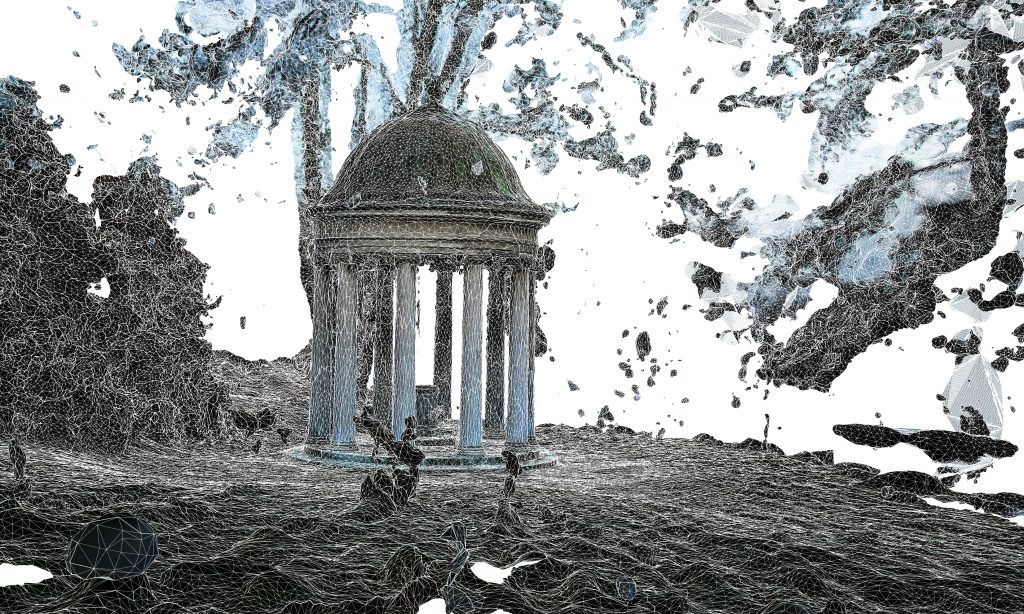
Error cultures and resilience in spatial and urban planning
TEXT: Daniel Schöngruber
IMAGE: Photogrammetry | Column temple on the farmer's mountain
The guiding principles of our contemporaries are predominantly characterized by a zero-defect culture. Mistakes are seen as failure and stand in the way of striving for efficiency. The prevailing expectations are aimed at avoiding mistakes, and mistakes made are sanctioned. The fear of sanctions and negative effects often leads to a concealment or conscious ignoring of mistakes. The zero-defect culture also inhibits the willingness to take responsibility and to position oneself clearly in a statement. Decisions can turn out to be wrong - a possibility that is difficult to accept.
But what are errors anyway? How can we understand the difference between a "right" and a "wrong" decision?
Mistakes are nothing more than the opportunity to consciously decide on an action and understand its implied consequences.1 Mistakes call for choice. Only where the option of a free decision is given is there also the possibility of error or legality. As far as we know, only humans have the quality of free choice. Animals are kept from the possibility of choice by their instinct, machines only follow intended programming.
To err is therefore deeply human and at the same time the best source of information that we have. Mistakes ask us to think about ourselves and our actions, to reflect on the effects and thereby gain new insights.
Since the second half of the 20th century, the establishment of positive error cultures has increasingly become the focus of pedagogy and science. Based on the research of Sigmund Freud's psychoanalysis, Gestalt psychology and communication sciences, the analytical approach to dealing with errors soon gained a broad academic discourse. The zero-defect culture is being questioned more and more, and new conceptual models and linguistic codes are being tried out. The central arguments of productive error cultures, the factual and non-judgmental documentation and processing of errors for the purpose of gaining information and knowledge, were first considered in the educational sciences. From the 1970s onwards, the concept of positive error cultures, based on the success of Asian companies and their practiced error culture, became increasingly important in business administration and management.2
The constructive handling of mistakes and crises leads, as far as the theory goes, to increased resilience. The term resilience (from Latin resilire “Bounce back, rebound”) is borrowed from physics and materials science and describes the resistance and self-regulating ability of materials and systems to external influences. The term was soon adopted by various research areas such as psychology, social science or ecology and subsequently became an almost inflationary “buzzword”.
In the definition of resilience, a distinction must be made between the models of "adaptation" and that of "elasticity". While elasticity refers to the ability of an element, an individual or a system to return to a stable initial state after a traumatic experience or crisis, adaptive resilience refers to the ability to adapt to changed external conditions.3 Elasticity therefore represents a “technical” form of resilience, which, however, raises the question of whether regaining the previous initial state is still a desirable goal. Adaptive resilience, in turn, characterizes a realignment of systems and behavior patterns to changed parameters and is therefore also referred to as “evolutionary” resilience. It is a dynamic and continuous process that aims to change disruptive influences and adapt to changing conditions.
Since it can be assumed that cities are also dynamic, changing structures whose existence is based on a variety of interwoven and parallel systems, the model of “evolutionary” resilience seems to be the more suitable one for constructive development. However, the prerequisite for achieving this resilience is the establishment of a positive error culture.
The “Urban Glitches” mental model uses the means of empirical urban research to analyze abnormalities and disruptive factors in the urban structure and to understand systemic connections. By implementing the approaches of constructive error considerations, valuable knowledge can be gained in the retrospective analysis of errors committed. A revision of outdated models is only possible by looking at the past.
However, cities should not be viewed as a static, built environment, but rather as the sum of all their residents, planners and those responsible for local authorities. Because only they are capable of making mistakes and can seize the opportunity to learn from them and develop further.
1 Retzer, Arnold. "Lousy mood: A polemic against positive thinking", S. Fischer Verlag GmbH, 2013. Print.
2 “Error culture”. de.wikipedia.org. December 12, 2021. Web. December 29, 2021
3 Sieverts, Thomas. “At the beginning of an urban development epoch of resilience? Consequences for architecture, urban planning and politics”, Federal Institute for Research on Building, Urban Affairs and Spatial Development, 2013. Print.